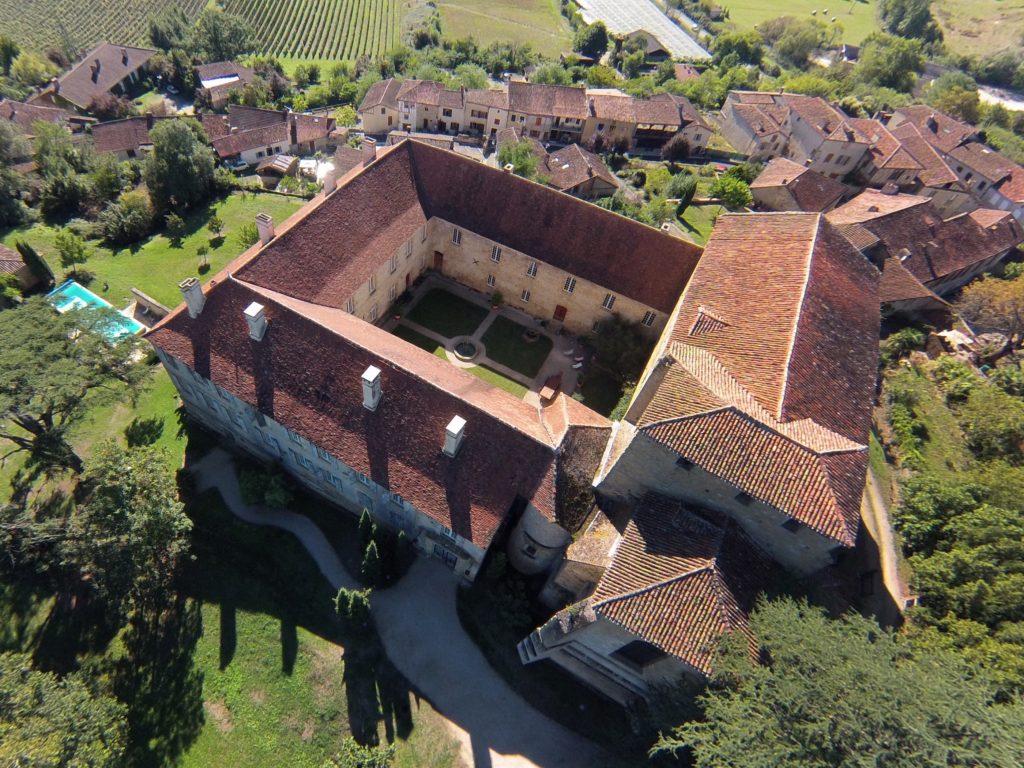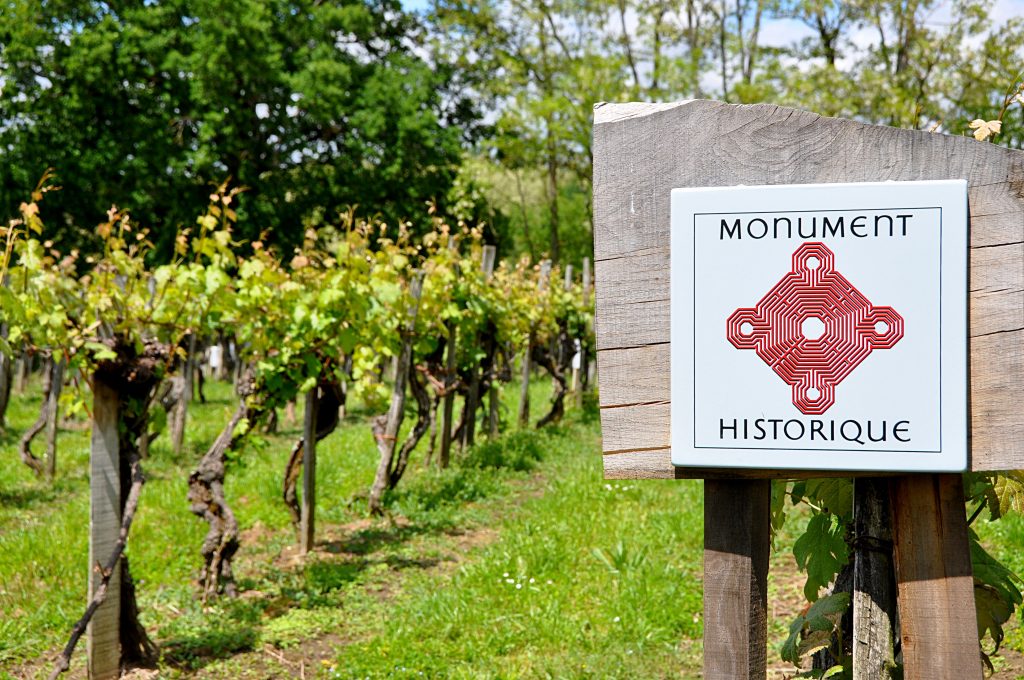
In the foothills of the Pyrenees in South West France you’ll find the appellation of Saint Mont; an unassuming place with hidden treasure.
Making wine is in the blood here. The C11th monks of Saint-Mont Monastery tended vineyards and exported barrels of their wine by barge along the River Adour which runs below the monastery. The vineyards of the river Adour were prosperous for centuries. The good stuff was exported to the English speaking world from the port of Bayonne and the rest was consumed at home. Many different grapes varieties thrived and the best were identified with the prefix or suffix ‘manseng’ referring to a Manse or manor house.
And then the pesky phylloxera came along and wiped it all out. Or nearly. 100,000 hectares diminished to just 200 and the quality also diminished to become rough and ready wine, much of which was distilled. The region was in slow decline until the Seventies when André Dubosc, a local winemaker, mobilised winemakers in Saint Mont and neighbouring appellations to revive the Saint Mont appellation. They called themselves the Plaimont Producers and their ranks have since swelled to 800 wine growing families to become the leading producer of South West France – producing a full range of wine from entry level to the finest chateaux offerings.
Marvellous, but what about the treasure of Saint Mont?
Well it lay hidden. When growers replanted on rootstock after phylloxera, they used local varieties which thrive in local conditions of high spring rainfall and hot summers. Hence Tannat and Pinenc became the signature red grapes of Saint Mont and Madiran. These were supplemented with the more familiar Merlot, Cabernet Sauvignon and Cabernet Franc which are quite at home here. In fact DNA analysis has revealed the originated in the Adour region. The native varieties produce quite rustic wine, so in 1997 the ‘Plaimont Producers’ hatched a plan to make a wine to up their game. For this they settled on Chateau de Sabazan and five young local growers were given the task of making a ‘grand vin’ from nine hectares.
1998 Chateau de Sabazan 1998
This is a blend of 80% Tannat, 10% cabernet Sauvignon, 10% Cabernet Franc and a seasoning of Pinenc. A deep coloured wine, it shows just a little browning and has a earthy, roasted chestnut aroma with a floral note. The palate has a fresh earthy character. It’s certainly gutsy, but the tannins, though substantial, are becoming quite supple and integrated. I won’t lie. It is rustic, but very wholesome and it hits the brief in showing the potential of a good site in this region.
Bravo, but what about the hidden treasure of Satin Mont. Well in the Seventies, growers were encouraged to preserve their old vineyards, and a study began to identify the vines grown that were growing in them.
In 1999 the Plaimont team struck gold with a vineyard first recorded in 1810 in the Carte de Cassini, but which probably dates back to the late 1700. Here they discovered 21 different varieties of which seven were unknown. This vineyard survived phylloxera because of the sandy soil, through which the phylloxera aphid can’t tunnel successfully.
The Sarragachies Vineyard of Saint Mont is possibly the oldest vineyard in France and is the only vineyard to be classified as a historical monument. The 21 grape varieties have been grafted onto rootstock and planted in a conservation centre established to preserve all the vines in the region. There are now 36 different varieties, including those which have never before been documented. This repository is a treasure trove of material. Many of these varieties fell out of use because they produced too little in a time when high yielding vines used to make cheap wine was the name of the game. These days demand has changed to become more discerning. The climate has also changed and some of these varieties maybe better adapted to warmer summers.

We were given the opportunity to taste a wine made from the pre-phylloxera vines of Saint Mont. In 2011 the Plaimont Producers began making four or five barrels of Tannat from these very old vines, which incidentally are maintained by layering, rather than replanting. This includes the fruit a from a vine of Pinenc. It is fortuitous that this one and only plant exists, as a blend is required by law. The winemaking is not entirely normal. After de-stemming, the fruit is fermented in barrel, rolled, racked and returned to barrel for a gentle extraction. After which it is de-vatted, pressed and put back to French oak for a year.
Les Vignes Prephylloxeriques Saint Mont 1871 2014
The 2014 has a very deep colour and a deep, spicy, savoury aroma. It is sturdy with big chewy tannins. There is freshness which may be a reflection of the sandy soil or maybe because the vines are on their own roots.
But how to translate the pre-phylloxera vines which have fallen out of use, to the real world. It’s a long and slow process. Take this for example – one of the grape varieties discovered in the vineyard was a single vine of Tardif, a late ripening variety with high levels of spicy aromas called Rotundone (think peppery Syrah aroma ). Twenty vines were planted in the conservatory and from this an experimental twelve bottles have been made in controlled laboratory conditions. And this is it…
Tardif 2016
Green peppercorn aroma. Quite a funky spicy aroma. Spicy black fruit on the palate. Full bodied.. Fresh and savoury with full, plentiful and quite dusty tannins.
In the spring (now in 2018) 1500 vines of Tardif will be planted. The plans is to make a commercially available wine by 2020, probably blended with Cabernet Sauvignon and Tannat.
And now to Manseng Noir
I’ve been saving this until last as it was my favourite red wine of this tasting adventure. Manseng Noir was discovered on Mr Duboc’s 150 year old vineyard in Madiran. It has lower alcohol potential than Tannat and lower yields. The wine we tried was just 11.4% vol.
Sample of Manseng Noir from the 2017 vintage: This has a lively fruity aroma. More fruity than Tannat with notes of blueberry. There are floral notes too. It has a more aromatic palate than Tannat. It is slightly spicy, but lifted. The texture is silky, fresh and light light bodied and finishes on a light and elegant note. You could chill this young wine and it would go down a treat. This currently goes into a blend with Merlot. I think it is rather nice and could stand alone.
For some reason I didn’t get to taste the blend and I’m not sure it is available anyway yet, so here are a few notes of some lovely wine you can find.
You recall the grand vin I mentioned – wine to ‘up grade’ perceptions Saint Mont in the ‘90s. In 1995 after restoring the vineyards of the Saint-Mont monastery the first wine was released from the best 5 hectares of vines. This terroir is unusual for Saint Mont for it’s clay soil on a cool north facing slope and a plateau. You need a long warm summer to get full ripeness on Tannat in these conditions. The wine is is a blend of Tannat, Pinenc and Cabernet Franc. Pinenc is native variety related to Tannat. It has high acidity with green pepper and blackcurrant notes.
Monastère Rouge 2014 is rich and meaty; full and tannic with dark savoury minerality.
Monastère Rouge 2010 is very good. It has a thicker texture. It is rich and rounded. The tannins are full, but succulent and it’s generous. It is 2010, but should continue to age well.
Monastère Rouge 2008 is much more mature than the 2010. I like the complex note of a more mature wine, but it is quite lean with lean with a herbal character and is not ageing nearly as well as the 2010.
A grand vin with a bit more elegance
La Madeleine Rouge is a blend of Tannat, Cabernet Sauvignon and Pinenc on the more typical gravelly clay soils of Saint Mont.

La Madeleine Rouge 2014
Silky and succulent with a lighter more elegant tannin structure. It is dark and savoury, fresh and well balanced.
La Madeleine Rouge 2013
Savoury, earthy minerality blend with fresh, black cherry notes. This is juicy and supple. The finish is peppery with a hint of charcoal.
This is the high end of wine production in the region and it is impressive. It leads the way. During the afternoon I tasted several examples of long lost grape varieties, some which were nicer than others, but most will contribute something interesting to a blend. As one young growers said to me, “It is in our past, that we find our future.”
It’s an exciting and evolving region. The Nose will certainly keep an eye on developments and is keen to sample the new/old varieties as they emerge from the conservatory and made into wine. I ask you – what self respecting wine nerd would not want to taste this treasure?

